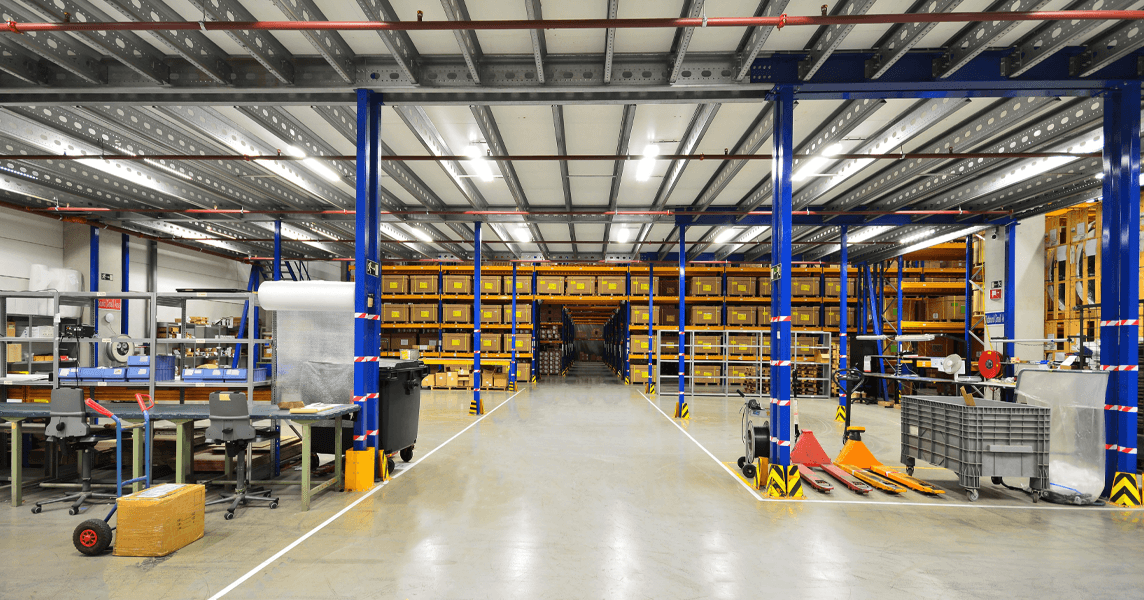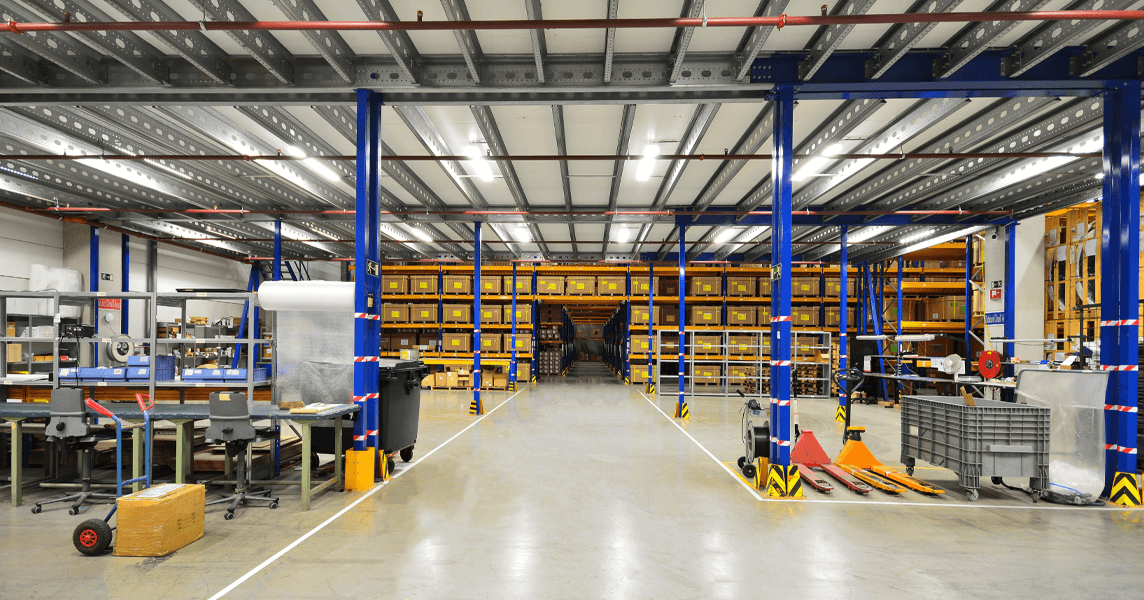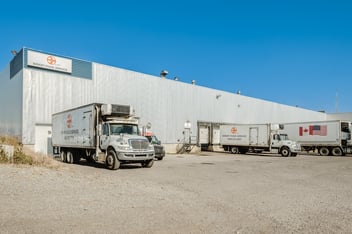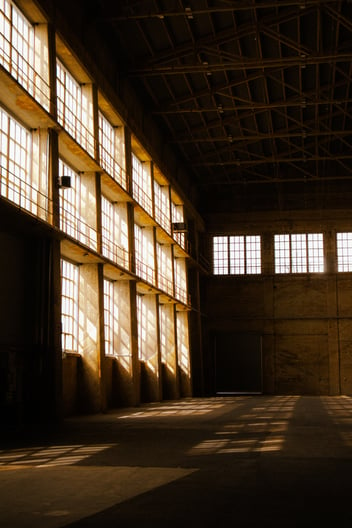
When searching for a new warehousing location to store your products, it is important to consider many things. Location, size, offerings, reputation, and experience are just a few of the more important factors. However, something that is equal, if not more important is the efficiency at which the warehouse operates.
A warehouse may be used for general storage of your general assets, products, or may even play a large role in the 3PL you are choosing. No matter the reason for looking into a warehouse, an efficient warehouse reduces errors and decreases the number of headaches you’ll face later.
Sorting, Organizing and Warehouse Layout
The efficiency of a warehouse greatly depends on the organization in the warehouse. No matter the skills and competencies of the warehouse team, if a warehouse is hard to navigate and operate, the employees can not work to their full potential. Labelling, storage locations, warehouse layouts and racking are just a few of the areas to look into at your proposed location. Inefficiencies in these areas result in lost, damaged, and expired products.
Labelling and Locations
Labelling and thoughtful locations are essential to a smooth operating warehouse. If a warehouse does not use effective labelling and location of storage, then your products are more likely to get lost in transitional stages. This can cost you money, customers and reputation.
Ensuring the warehouse you are looking at utilizes the thoughtful placement of racking and encourages smart labelling means there is a smaller chance of products getting lost later on. To better understand the purpose of label systems and prime storage locations, we have broken each down into how they can be best optimized to benefit you.
Floor and Rack Labels
Labels allow for optimized navigation of products through labels located on the floor of the warehouse or on the racking structures. These can be used to locate specific products, as well as find where each product goes upon arrival. An optimized navigation system from labels allows workers to pick products quicker, meaning shorter wait times for you and your customers.
Dynamic vs. Static Storage
Another consideration to keep in mind when scouting out a warehouse is the layout. While it may not seem as important, an efficient layout can be the difference between late and on-time products. There are two main kinds of storage your products may fall into at a warehouse. Dynamic and static storage types.
Dynamic Storage
Dynamic storage encompasses products that are not sitting in storage for a long time. This can be products from cross-docking or food service inventory with an expiry date. This dynamic storage area allows for quicker movement of products. This is ideal for your products that are needed to be accessible and moved quickly to get on deliveries or be taken out of storage by you.
Static Storage
Static storage is ideal for products with a much longer shelf life. Overflow products also can be stored in this location as they are not in a rush to be sent out. Static storage can also be used to replenish distributed products used in dynamic storage.
Ensuring the warehouse has appropriately spaced and maintained dynamic and static storage spaces allows for quicker turnaround on your dynamic products, getting them or out on time without having overflow and storage items in the way. An unclear storage system where dynamic and static are not separated can lead to increased delivery times as products need to be identified and pulled from amongst other products.
Warehouse layout design
While having static and dynamic storage areas is a great factor in any potential warehouse, the layout of the warehouse should complement the two spaces. This design and layout of a warehouse can greatly improve or decrease its efficiency. There are three major layout designs that a warehouse may follow, each with its own benefits and drawbacks. It is important for you to identify and choose a layout that you believe to be suitable for your business needs.
L Shaped
An L-shaped warehouse layout is set up so the traffic flows in the shape of an “L.” The loading and receiving areas are located on one side of the building, and the shipping and picking areas are posted on the adjacent side. The remainder of the space is filled with products and extra storage. L-shaped warehouses are primarily staged to accommodate a certain building style. With no notable pro’s or cons for any business, it is an effective layout.
I Shaped
An I-shape layout utilizes a large storage area located in the middle of shipping and receiving areas. Receiving and shipping have quick, direct access to the storage locations. I-shaped warehouses are extremely beneficial for warehouses that house many clients. The layout allows for a direct flow of traffic with minimized congestion. This layout can be beneficial if you know you are one of many customers at a large scale warehouse and wish to have the peace of mind that organization and speed is a priority.
U Shaped
The U-shaped layout operates with the least amount of product handling where shipping and receiving are connected through the storage and staging areas. U-shaped layouts are ideal for cross-docking operations. If your business requires frequent cross-docking operations, this may be the best warehouse option to look into.
Racking and Storage Systems
Next up is the consideration of if your products can be safely and securely stored in the facility you are considering. There are multiple kinds of racking for warehouses: Static shelving, mobile shelving, pallet racking, multi-tier racking, mezzanine flooring, wire partitions. Each has its own benefits and disadvantages and it is important to utilize the kind that works with what you need to store.
If your products are large, heavy and need shelving that can support it, a warehouse with ample forms of racking and forklift access is crucial. If your intended products are small, light and moveable by hand, then a warehouse with tons of shelving and easily accessible shelves is the best option.
Shelving
Static Shelving
Static shelving is shelving designed to stay in one location. Usually not compatible with forklift use, static shelving is often used for products that are replenished often by hand. This style creates fixed aisles.
Mobile Shelving
As the name suggests, mobile shelving units are mounted on carriage or rail systems. This allows for flexible reorganization of aisles to best access products to be picked or stored.
Racking
Pallet Racking
Pallet racking is typically used for larger-size products and boxes and is forklift friendly. Their increased size and stability allow for a greater weight capacity than shelving.
Multi-Tier Racking
Similar to pallet racking, multi-tier allows for vertical instead of horizontal stacking. This allows for the best use of space in your warehouse. The caveat is that you must have access to or own a forklift of some kind to access pallets and items on the topmost racks.
Taking into account what products you intend to store at the warehouse can largely affect your options. As not every warehouse implements the same storage styles. While most warehouses may have a combination of shelving and racking systems, not all have ample room for both.
Implementing Tech
In this day and age, it is common knowledge that technology can make many tasks much more efficient. However, not every warehouse takes advantage of these technologies available. While it may be tempting to partner with a warehouse that uses tried and tested manual systems, the time saved through the use of technologies may save you more in the long run.
IMS
Inventory Management systems can track all important details about your inventory such as:
Product quantities
Product suppliers
Product Costs
Trends
All these areas are beneficial to improving your customer’s experience and allow the warehouse workers to operate in a more efficient manner.
Automation
Automation in a warehouse can include many things. Primarily, it is the technology that improves the speed and efficiency of operations. It goes without saying that improved efficiency in your chosen warehouse hugely benefits your business operations. Technology such as RFID or scannable labels allows the warehouse to keep track of your stored products and keep them in a system.
Some other examples of automation in the warehouse are:
WHS
Robots
Automated Storage and Retrieval systems
Voice Picking
IOT’s
What to Look for in Your Next Warehouse
Looking for a warehousing facility to store your product can be a difficult process. While the practices and techniques outlined in the blog above are commonly used, not every warehouse follows such ideas.
Whether the facility is being used by your 3PL for its operation, or you are looking to store your products safely; it is important to know about the warehouse operations and how it ensures the protection of your product. By including the above best practices in your search criteria for a warehouse, you can narrow down the list of potential locations.
An efficient warehouse means your products are in better hands. Whether it is storage or 3PL-related storage, you have the peace of mind that a process is in place to reduce errors and damage.
Looking for a 3PL or Warehouse Provider?
Contact us today to learn more about Birkby’s comprehensive 3PL and warehousing solutions.





Leave a Comment